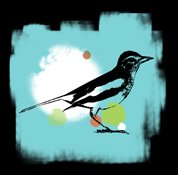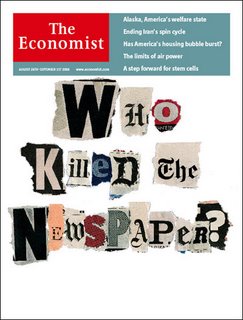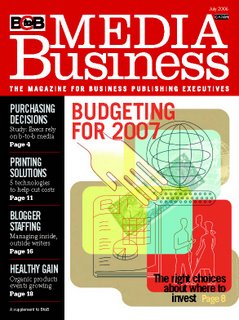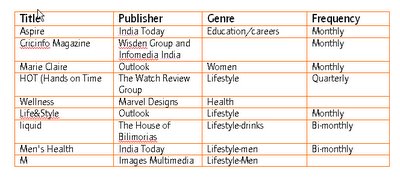According to a mailer inviting entries to
Kyoorius Design Yatra 2006, a design festival that aims to serve as a platform that brings together Indian and international design communities, it is likely that these three names will be in
Goa from 7th September to 10th September as Speakers.
More about the men and their magazine experience…
Neville Brody is a British graphic designer, typographer and art director, known for his work on
The Face magazine (1981–1986) and
Arena magazine (1987–1990), as well as for designing record covers for artists such as Cabaret Voltaire and Nine Inch Nails.
He was one of the founding members of FontFont (now FontShop) in London and designed a number of notable typefaces for them. He was also partly responsible for instigating the FUSE project an influential fusion between a magazine, graphics design and typeface design.
Nick Bell was creative director of
Eye, the highly influential international review of graphic design from 1997 to 2005. He is now Special Consultant and occasional contributor to the magazine. His experience on Eye has enabled him to develop a more curatorial method of editorial design – one he has adapted very successfully for the design of exhibitions.
Scott Goodson is the Co-founder of
StrawberryFrog, an agency based in Amsterdam and New York.
Fortune Magazine has hired the New York office of StrawberryFrog to help build its brand.
Fast Company reported some months ago that Fortune expects Strawberry Frog to add coolness to its brand image.
According to the mailer the event will also see the launch of
Kyoorius Design Magazine, a quarterly magazine that covers Indian design scene. Initial print-run is expected to be about 5000 copies. The magazine would be circulated in India, Europe, USA and Southeast Asia (in phases). The launch issue is estimated to weigh in at 84 pages, covering 12 prominent design studios over India, with the theme "the future starts here".
Those intersted in enrolling for the event can register
hereLabels: Design
 The magazine is brought out under licensing agreement with American Express Publishing and will be published monthly. It will be distributed throughout India, Sri Lanka, Bangladesh, Nepal, Maldives, Pakistan and Bhutan.
The magazine is brought out under licensing agreement with American Express Publishing and will be published monthly. It will be distributed throughout India, Sri Lanka, Bangladesh, Nepal, Maldives, Pakistan and Bhutan.












